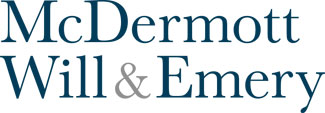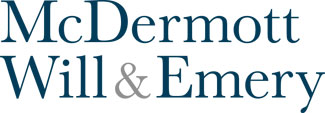
Now that we can capture and use the signals emitted by human brains, we should consider whether brain signals are public property. If your face and voice become available to the public through use, is the same true for your thoughts, when they can be read by others?
Several recent news items have illustrated the progress humans have made in understanding the brain’s workings and harnessing an active brain for practical purposes. For example, this week, Duke University researcher Miguel Nicolelis used microchips and the internet to connect the brains of two mice on different continents, so that the thoughts of one can influence the actions of the other. Much of Dr Nicolelis’s work involves creating an exoskeleton that a paralysed person could operate with brain signals.
Similarly, University of Pittsburgh researcher Andrew Schwartz has been working since 2006 to find ways for a person to control a robotic arm with only brain signals. In February 2013, surgeons implanted four microchips in a paralysed patient’s brain that translate her brain’s signals into movement in robotic equipment. 60 Minutes and ABC News showed a video of the Pittsburgh patient feeding herself ice cream through brain signals to a robotic arm.
Such scientific work involving directed brain signals seems like science fiction, but the technology is available right now, and will only improve over time, and soon will be available commercially. Right now, the most rudimentary brain-driven technology can be purchased. High-end toy emporium Hammecher Schlemmer sells a “Telekinetic Obstacle Course” that use focused brain waves to manoeuvre a ball through an obstacle course. The game comes with a headband to read your brain signals and then wirelessly transmit those signals to the game’s air fan, which increases or decreases speed depending on your signal, blowing a foam ball around an obstacle course.
For example, Australian scientist and entrepreneur Tan Le, the founder of Emotiv Lifescience, has created a headset that serves as an interface for reading the wearer’s brainwaves, making it possible to control virtual and physical objects with directed thoughts. Eventually the headset will be conditioned for diagnostic use, but current products using the brain-interface headset for videogames, allowing users to drive virtual race cars with their concentrated thoughts.
Modern science has identified two types of “brain spray”, or signals that can be harnessed from outside of a person’s skull. The first is the directed thoughts described in the examples above, where certain voluntary brain signals, created by the subject concentrating on a goal or action, are read and translated by either a device worn by the subject or by microchips placed in the subject’s head. Research into this field, including US government funded research by DARPA, may lead to practical solutions allowing wounded veterans or other people with disabilities to grasp, drive, walk and talk again.
This type of brain spray will lead to legal concerns. For example, if a wounded soldier is offered a limb that responds to his thoughts, the company providing the limb will want to capture information from the electronics that capture brain signals, both for understanding and improving the equipment and for monitoring its use. Could a disabled person say “no” to the company who was offering a newly functional life, or would he be forced to sign away his brain spray for benefit of science and a company providing the equipment.
We all know that our signals from laptops and smartphones are captured by any number of companies – telephone signal providers, hardware manufacturers, app developers, banks and payment businesses – when we undertake actions or transactions over the internet. There is no reason that the same rules would not apply to our directed thoughts when our computing devices are controlled by focused brain signals. Google is already testing computing in the form of eyeglasses that could easily be equipped to read such brain spray and turn it into both action and data. Our thoughts would be available to our service providers.
The other brain spray that can be captured and turned to practical use is translation of brain activation signals currently read by functional magnetic resonance imagining machines (fMRI). These signals are more intrusive than the focused brain signals described above, because the fMRI provides pictures of what part of a human brain is activated by situations or stimuli. The fMRI pictures can easily be interpreted as triggers for various emotions. Because certain emotions trigger activity in specific parts of the brain, fMRI brain spray comes close to showing what the subject is feeling about the situation he is in.
Scientists currently read and interpret the emotional and logical meanings of fMRI signals from the human brain. In a 2008 article for Atlantic Monthly, Jeffrey Goldberg submitted himself to brain readings where scientists used MRI scanning to observe which areas of Goldberg’s brain reacted to certain images. The scientist showed Goldberg pictures of personal, political and cultural figures, recording his brain’s involuntary reactions with the MRI machine and noting when his brain activated in areas indicating affection and affinity for certain pictures (Goldberg’s wife and Bruce Springsteen) and revulsion at other pictures (Osama bin Laden).
This technology is attractive to corporations wanting to know how to stimulate your urge to buy their products and to see how you react to their advertising. However, do you want companies to know this much about you? Current law holds that if you have no reasonable expectation of privacy, then you cannot stop anyone from harvesting information from you. For example, when you are out on the public roads or when you walk up to an Automated Teller Machine at the bank, you are subjecting your appearance, your facial expressions and even your body itself, to scrutiny, photography, recordation and information capture by other people (or the bank) who share your public space.
If your appearance, your voice, and even your DNA is available to everyone in public (many US courts allow police to collect a suspect’s DNA in public places without a warrant), then why would this rule not extend to your brain spray when you enter the public area at a time that mobile fMRI technology or other brain signal capture technology is commercially available? Exposing your brain signals in public may be no different from exposing your face or your voice at the same time. Why would you have a reasonable expectation of privacy in your brain spray when you know it can be read by anyone with the right equipment? Many will argue that once your body is in a public space, then it can be read by the government or business in any way that they are able.
If there were limits to the use of this technology to read your exposed brain signals, situational rules would have to be developed. For example, when fMRI technology is cost-effective and practical to use from a distance, should you automatically submit to brain scanning just by walking into a certain store, casino, bank or government building? Will companies provide notice before scanning you? Will the scan data be linked to your credit card purchases to identify you, linked to the uniform identifier in your smartphone, or linked to RFID tags in the products you buy?
This technology also has national security applications for interpreting malice in sensitive situations. The government may be able to read a suspect’s brain activity to identify intent to act before the crime takes place, scanning banks and airports for signs of potentially criminal intent. But our criminal law is based on punishment for actions, not thoughts or intentions. Everyone has intemperate thoughts of anger, frustration and fantasies of outrageous exploits, but people manage to keep those ideas in their heads and not act on them. How much do you want the government to know about your unfiltered thoughts, once those thoughts can be read from outside your head?
Once the technology is widely available, anyone could use its invasive and interpretive powers. Employers may examine their workers for hostile thoughts toward management or sympathetic thoughts toward labour organisers. Colleges can probe their applicants’ level of enthusiasm for learning. The military could test for signs of homosexuality in recruits without asking or telling. Lawyers and investigators in divorce cases would have a new avenue to examine unfaithful behaviour. How quickly would enthusiastic opposition dig up the thought crimes of political candidates?
Our laws are inadequate for addressing these issues or protecting the privacy of our brain spray. Current privacy law in the United States would not prohibit harvesting brain spray and would not even require an individual’s permission to do so. The current American privacy laws relating to reading your biometric measurements and physical condition only apply to body signs taken for health care purposes.
If a hospital records your blood type or your DNA to test for disease, those records are private and you have the right to keep them from being used for other purposes. However, a reading of your body, including your DNA and your brain spray, is not protected from transmission or sale between companies if the reading was taken for security, marketing or intelligence purposes. The recorded thoughts showing your excitement at the perfect little black dress or those used to power your prosthetic arm may be transferred to anyone. The law leaves you vulnerable.
Brain spray is the ultimate prize in the larger security and privacy debate concerning what personal facts may be captured by commercial or governmental interests. Why bother asking you what you think about a politician or a product when a company can read it directly from your brain? Without legal change, finding out who really loves “mom”, apple pie and America could soon be as simple as a head examination.
Originally published March 22, 2013 in the International edition of Intellectual Property Magazine Online
of
Like this:
Like Loading...









